The Project Path
Destination Imagination, better known as DI to the students of PLP.
This year we took part in two tournaments, the Regional tournament and the Provincial BC tournament.
Destination Imagination, better known as DI to the students of PLP.
This year we took part in two tournaments, the Regional tournament and the Provincial BC tournament.
Crazy? I was crazy once. I did PLP. A PLP project. A PLP project with memorization. And memorization makes me crazy.
Welcome to Cray Cray Yay Yay, the project where we delve into the world of presentations and writing and, as my hook hinted at, memorization. This project was all about the Apple “Crazy Ones” campaign which was a part of the “Think Different” series of the late 90s. We made use of storyboards and storytelling features to make our presentation more guided, natural, smoother, and less robotic. We worked with many teachers over the course of the month and a half project, and one of the teachers, Ms. Madsen, helped us work on inflection, projection, and all the other “tions” to make our presentations pop. This was a long journey, and it may or may not have driven me, dare I say, crazy.
Without further ado, welcome to the crazy world of Pikachu- I mean PechaKuchas. Enjoy.
I wasn’t on the PLP trip, which unfortunately left me out of a lot of the learning. The kids in Seattle learned about tons of different buildings and people, like Frank Gehry and the MoPOP. The students that stayed at Seycove didn’t learn any of this, and were expected to either research on their own, or just know. It’s not like we were given time for it either. We were kept busy learning about local “crazy” people and how they change the community around them. (see “My Work” section).
Now let’s reflect on how everything went. The preparation could have been better for sure, but everything’s always better with more practice. The performance ended up going well after all, though I had to do my part with a cue card of sorts due to being very nervous and forgetting lines. During the presentation, due to how I was holding the cue card when not in use, when I needed to use it to refer to a topic, I’d have to bring it from my side up to my face view. I realized that this would draw too much attention to it, so I just improv-ed as best I could. I’d say it turned out well, but could’ve gone better! (Granted, we were missing a group member.)



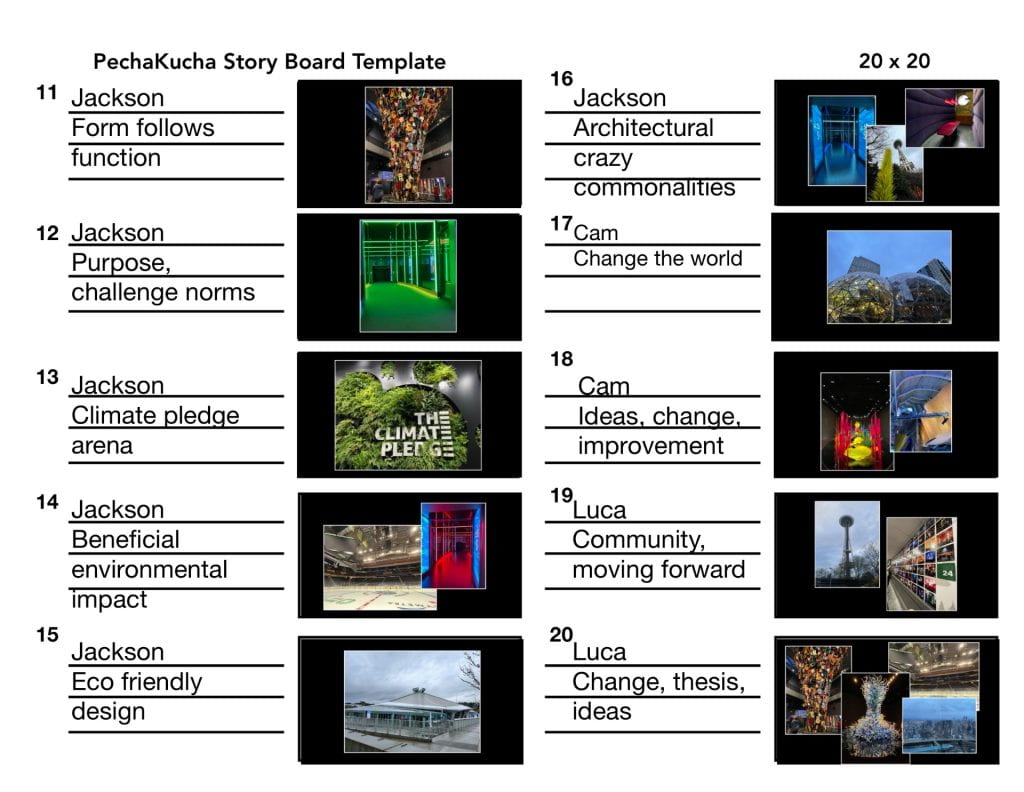






A crazy person changing the world is an important idea. Someone with unique thoughts and a perception of how the world should be or can be that differs from others truly stands out. Like they say, however, knowing (or in this case believing) is only have the battle. All the people we studied in the project like Einstein, Ghandi, and even Charlie Chaplin changed the world in some way by going out there and pursuing their own crazy ideas and ideals. This is exactly what the “Crazy Ones” campaign was all about.
All in all, it takes a crazy person to change the world because they’re the ones that pursue the ideas they have, and act on their inspirations and aspirations.
Thanks for reading, and stay Cray Cray!
Hello and welcome to the first check-in post for the Cray Cray Yay Yay project. In this post, I’ll show my progress so far, and showcase my work. Expect to see a mini essay and a terrible story spine that shows my plan for the PechaKucha. I’ll also upload the Architecture group’s Craft space to show off the planning we have (or lack thereof). Without further ado, let’s get into things.

“Who are you gonna be?” This question echoed throughout my mind since the start of the project, but why is it important? Personally, I find it to be a great self-reflection question that can really get you thinking about yourself and your future. “Self-reflection is a process of communicating internally with oneself. (link)” Looking forwards at goals and expectations that you or others have set out for yourself is important so that you can plan for how you’ll meet those life conditions. Life is also constantly changing, so something that existed as a popular and wide-spread job opportunity when you were a kid might be very low in demand and replaced by another job when you’re in university or when you’re an adult. On the same note, with the world being ever-changing, your personality and who you want to be (see what I did there?) is also ever-changing, affected by the world around you. Life is complicated, and it is one of the main forces that shapes who we are.
Thinking about the driving question (“What kind of person do you aspire to be?”) for the course of the project really helped me improve myself, as it gave me some direction. Especially with the course planning meeting and semester turn-over, all of these influences had me looking forwards more and changing my mindset. This really was a driving force both for pushing myself forwards with projects and life plans, and also with strengthening friendships and relationships to make sure I can still call such amazing people my friends and family in the future. Along with that, I began to think about what kind of person I aspire to be in the future. I brainstormed what really makes someone a role model and also interviewed a person who I thought fit the bill (my grandfather). A role model should be an individual who’s responsible, considerate, empathetic, and trustworthy. These traits are important qualities to me, and something I strive to be in the future. I want to be someone who can be relied on by those around me, and a steady pillar in whatever career path or occupation I choose in the future. I want to be the person who teaches others, mentoring them with the strategies I pick up, and being hardworking and knowledgeable. I look up to those people that can so easily be there for others and naturally be thoughtful and unpretentious.
Turning dreams into reality, goals

“Who you are? Cameron
What do you love to do? Sing
Who do you do it for? My family and friends
What do they want/need? Entertainment and a friend
How do they change as a result? With friends in choir, I provide support and someone to talk to. Makes them happy (I hope)”

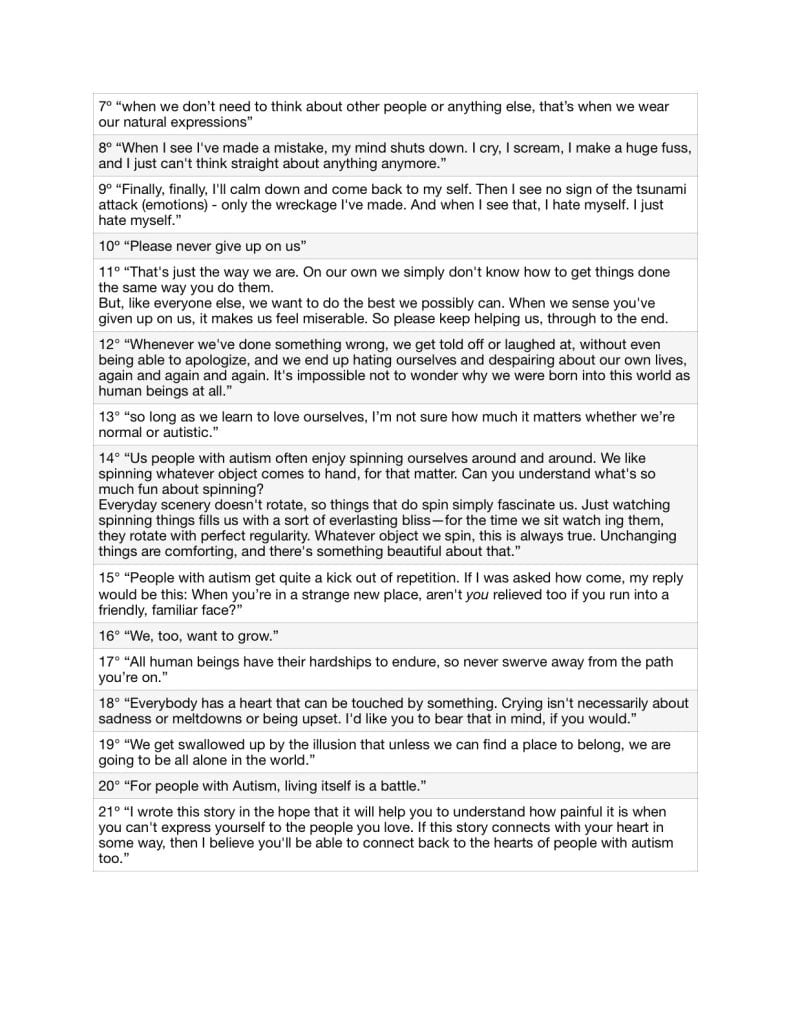


“It’s important to balance your life so that you’re not overwhelmed and can’t accomplish what you set out for yourself. My grandfather (interviewee) talks about how he had to give up a bunch of things once he had kids so he could spend the time he needed to with them. This also closes in on the aspect of improving one’s self. Helping others is a good way to also help yourself as it can make you feel good when you accomplish something that makes someone else feel good. Naturally, there can be challenges in the process, but it’s for the best to help become the most efficient and empathetic person you can be.”




Welcome to the fourth part of the “No Sitting Allowed (Exhibition)” series! This post is a smush together, as the 2023 Winter Exhibition was basically just a chance for PLP 10 to show off their Ology of Apology work, which will be the true focus for this blog post.
In the Ology of Apology project, we made a government cartoon, a memorial out of Legos, reflected on propaganda, watched the “Pigeon” film, wrote (a lot), completed an exit ticket, and made a blog post. Oh wait, that’s this! We designed and created a poster board, did lots of DIY work, held class discussions, put together a model memorial, presented, researched, and collaborated with the group.
Now without further ado, let’s begin!
During this project, we learned about Snaidanacs (Canadian “rituals”), went back into worldview, stereotyping and cultural superiority, and bystander and upstanders. We went into detail on what makes a memorial, what some examples of memorials are, what aspects make each one successful, the creative process of making a memorial, and why memorials are important. We also talked about the purpose of a memorial, and whether it’s positive or painful (it can be both). This project really helped me understand more in depth what a memorial really means to a person and why they’re made in the first place. The main focus of the project had us looking at discrimination and what makes it different from general racism. We focused on the discrimination of Japanese, Chinese, and South Asians in BC, and the history behind it.
By the time we got to Exhibition night, I had learned a lot more than when I’d began the project, specifically learning a lot about the tragedy of the Komagata Maru, which was a ship that carried 276 Sikh passengers to BC, only to be denied entry and have many passengers starve before being forced to return. Over the course of the exhibition, I was able to share my knowledge with the passerby coming to see and vote on the different exhibits. It truly was a wonderful experience.
I put my skill in DIY and craft (not Craft) to good use during the final stages of the project. I worked smoothly and flexibly with my group to create the memorial we all agreed would, even if not win, still show that we put in effort. I was able to further develop myself in the area of graphic design and creative thinking. The Lego challenge where, with what Lego we were able to snag for ourselves, we had to come up with a memorial and then write about it, definitely helped me work on a lot of my areas of weakness. I truly enjoyed the creation process for the group memorial, and it brought me lots of joy to see the final product that had come together nicely. Something I had a little more trouble with was all the writing necessary, as that’s currently an area of struggle for me.


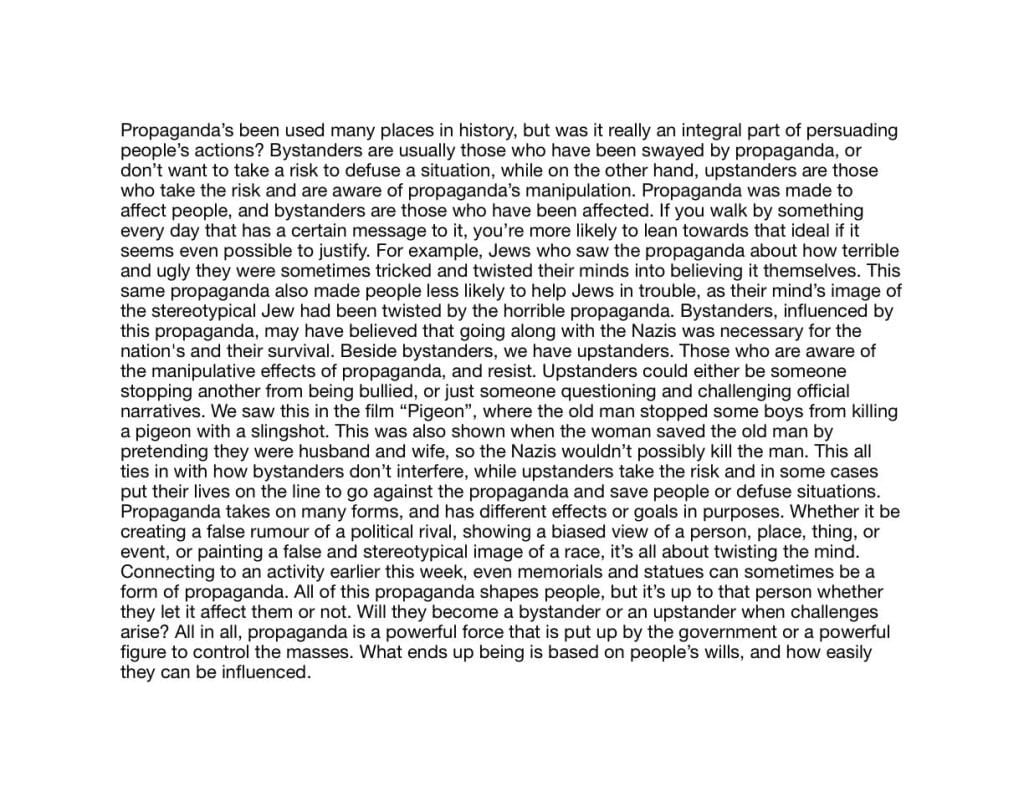



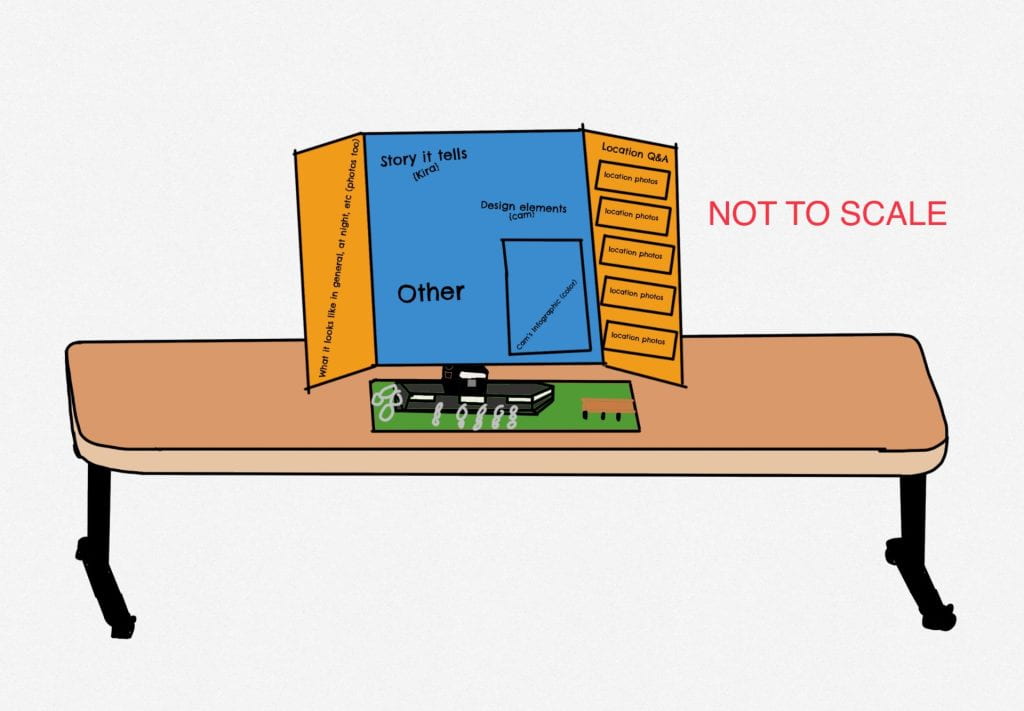
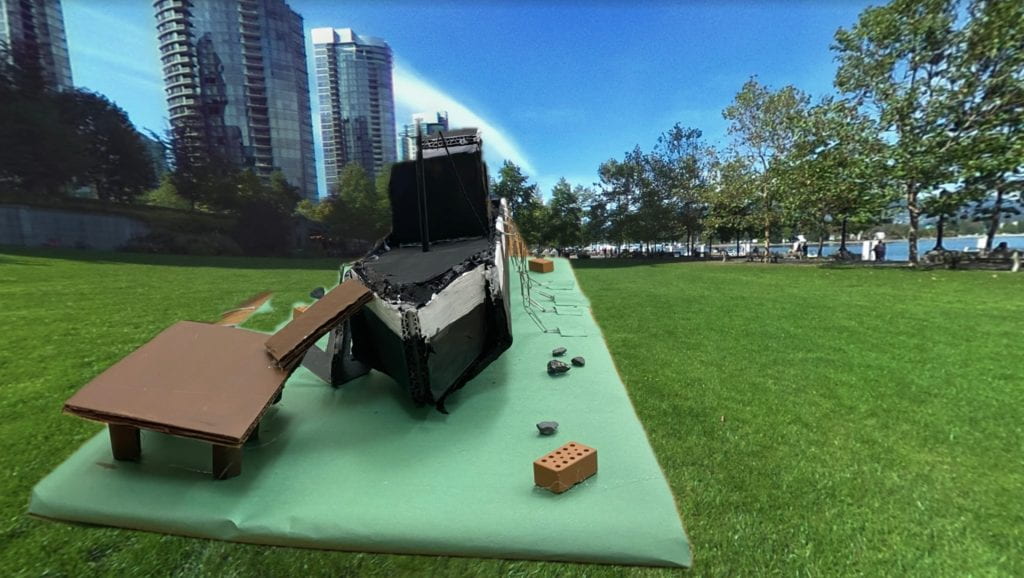

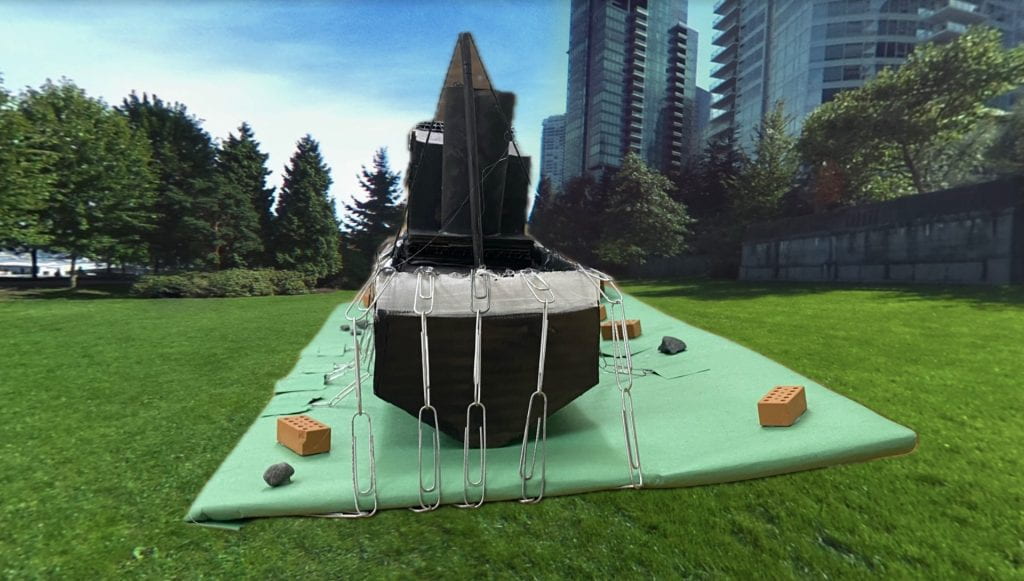







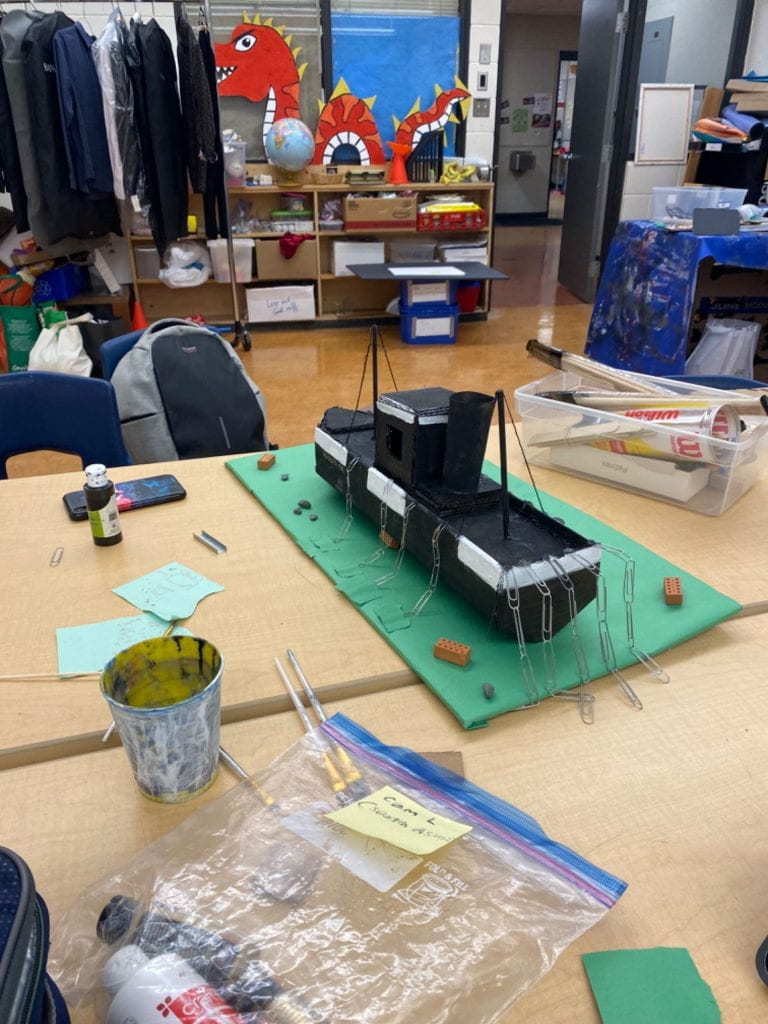





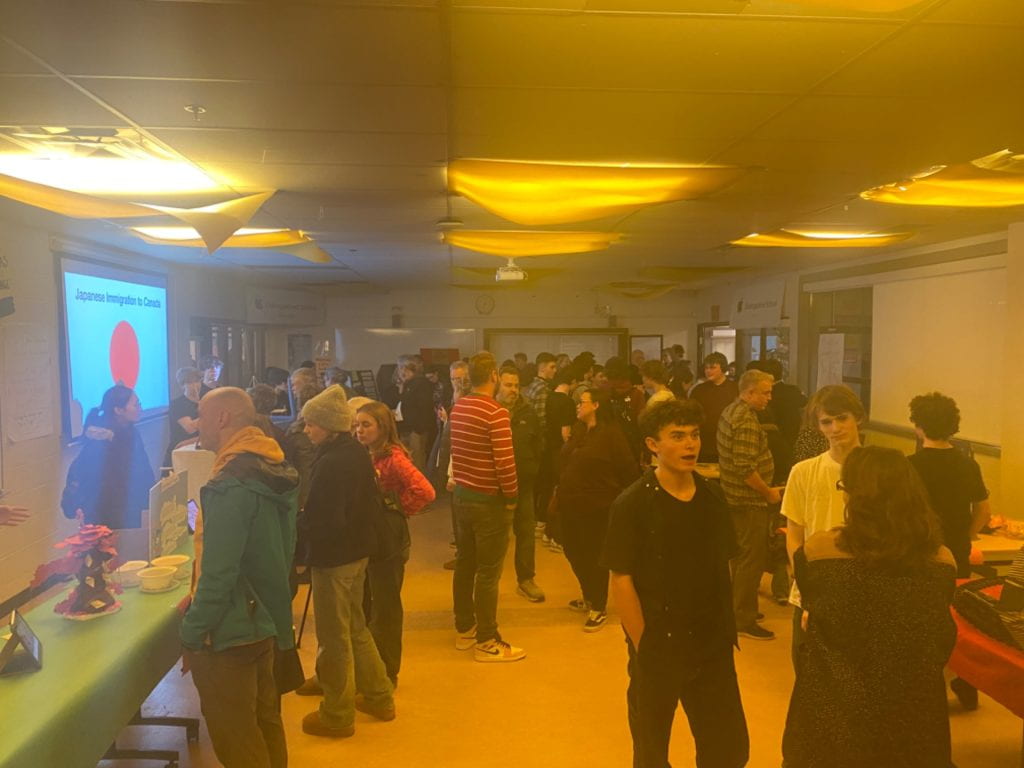




It is critical to recollect the wrongs of the past and the endeavours made to apologize for them, so we can gain from our mistakes and try not to mess up the same way later on.
For instance, recognizing the previous wrongs and moves the transgressor initiated to apologize for the activities. The wrongdoer’s apology statement, which makes it clear that they truly regret their actions and the harm they caused. As well as communicating regret, compensation is a significant approach to keeping the expression of remorse alive and exhibiting the transgressor’s authentic expectations and endeavors to set things right. We can utilize memorials to keep alive the memory of either excruciating occasions or influential individuals, whether to safeguard their memory, or maintaining an optimal the individual/occasion held.
We have to keep the apology alive by keeping it in our memories and learning from it.
It’s a presentation, it’s a PrePol, it’s a final reflective blog post! (even though it’s only halfway through semester 1)
Welcome to the first PGP post, where I’ll be talking about competencies, learning strategies, what worked for me, what didn’t, and much more! From taking up Maker and personal time, to taking stress away from (or adding stress to) the minds of students, this post is all about the journey through PGP. In this post, we’ll go over the driving question and my answer, evidence of the organization tactics, why the personal documentation system was such a bad idea for me, and proof of my work.
I hope you have a good time reading this! Now, let’s move onto the post.
As this project was mostly centred around strategies, different apps, and different ways to organize yourself, there wasn’t much research to be done or facts to be learned. One thing near the start of the unit, however, was a video about the effects of happiness. I won’t go into too much detail here (see “Craft Notes and 421 on Happiness video with Why Comment” in “My Work” section), but it was basically about the benefits of happiness, how to trick your mind into happiness, the negatives of the world, and the norm vs the average.
So many strategies provided, all for the end goal of creating a less stressed, more organized you. Which worked, and which didn’t? That’s what I’m here to cover.
Some of the strategies that we were given to try did not work for me. It was either too much commitment, too much to remember, or just didn’t connect with me. One example could be the Daily Reflection Journal, in which I felt like it was more of a commitment than an opportunity to reflect on the day and release my thoughts (which is what I assume the intention was). The major thing that didn’t work with me, for the same reason as the Daily Reflection Journal, was the Personal Documentation System. It was way too much writing for me, even though it had been my own idea. I should’ve considered my strengths more and realized that writing is not my strong suit. In hindsight, perhaps doing daily drawings would’ve been better for me. I ended up barely getting through three days/assignments worth of tracking before eventually falling behind and losing track completely. This strategy that I myself came up with did not work for me, and rather hindered me and caused more stress.
On the other side of the coin, we have the things that did work for me. The original pitch for the final PrePol took a while to come up with, but when I finally settled on an idea, I couldn’t wait to see how it would turn out. Unfortunately, as I didn’t have enough time to create and execute the idea, it’s been left as an idea for the future. The creative writing pieces of the Daily Reflection Journal were quite thought-provoking, and depending on the topic and time given, I felt like I was able to clear my mind to some extent. Clearing out my photos was a huge weight off my mind as well, and though it did end up taking quite a bit of time, I found it 100% worth it after the fact. Buckets were also a big bonus for me, because when I took the time to use it, it felt very rewarding to check off big goals, or even smaller ones.
Moving forward, I’ll definitely be keeping the homework trackers, checklists, & to-do lists to keep track of my day-to-day life. I already use tables and recording docs to keep track of things such as Spotify songs or shows I’m watching, so I believe this will be useful for how my brain works.
“I’ll document my learning on Numbers. I will mark my stress levels every single day of the week. I will also write down the corresponding assignments of each day. I’ll look for patterns in this to see if certain activities from that day were harder than others to identify my strengths and weaknesses. I will also keep track of days when I handed in assignments late or didn’t meet the guidelines first time around (if applicable). I’ll write down how I felt I did on each assignment (i.e. keystones, in-class activities, normal Showbie assignments, etc.). I’ll write down things I think looking back I could’ve done better.”
“On Wednesdays and Fridays, I will document all these things at lunch (since PLP will be done for the day) and on the other weekdays, I will document after school (since I have lunch activities those days).”
“This will work for me because I’m constantly journaling and keeping track of things so I’ll be able to get into the habit quickly. The fact that I’ll be recording every day MAY get a bit overbearing, but I think it’ll work best for me as the day will still be fresh in my mind.”
“To answer the driving question, I will use an ad format video to “pitch and showcase” the different learning strategies and systems to balance and organize my life. Then when it comes to the person interview “what did you think of this product”, I’ll talk about my experiences with the different systems and which I preferred and will carry on. I’ll also talk about different support things of my learning plan as related products. This reflects my personality as well because I love acting and also have a low attention span, just like a flashy ad. I will play this at the end of the Pre-Pol.” – ShamWoW
“Week 1 Reflection: This first week was very well-planned for an introduction, and I enjoyed participating in each and every activity. My favourite was the daily journal. It let me express my thoughts.”
“Week 2 Reflection: This second week was a bit more unique. I found that the daily notes gave me a bit of time to think, and really look back at what I was happy about, unhappy about, and all things in between. Thursday was my favourite note day, same as last week. Seems like I have a passion for journaling. Next week, I’ll focus on keeping my attention glued to class and the activity, as that was the only problem I noticed at all.”
“Week 3 Reflection: The third week was a bit lacking in motivation. My mind had been drained of proper words in previous weeks, so I had short, terrible answers in some. This next week, I will work to maximum effort to make up for this failure of a week.”


“Physical Capture: In the future, I will do cleanups of my room and house every two weeks, to make sure I’m not getting lost in the clutter or being too disorganized. This has worked for me in the past as I’ve done monthly “room purges” and cleared out my room significantly. (That’s the reason my room looks so tidy already in the first photo, it’s shortly after a large clean-up)”


“Digital Capture: In the future, I will do monthly cleanses of my iPad and phone, to make sure that I can have the easiest and most organized learning experience. This is the first time I’ve ever done this, but after doing this for the first time, I’m already feeling a large weight off my shoulders. This is great for me.”
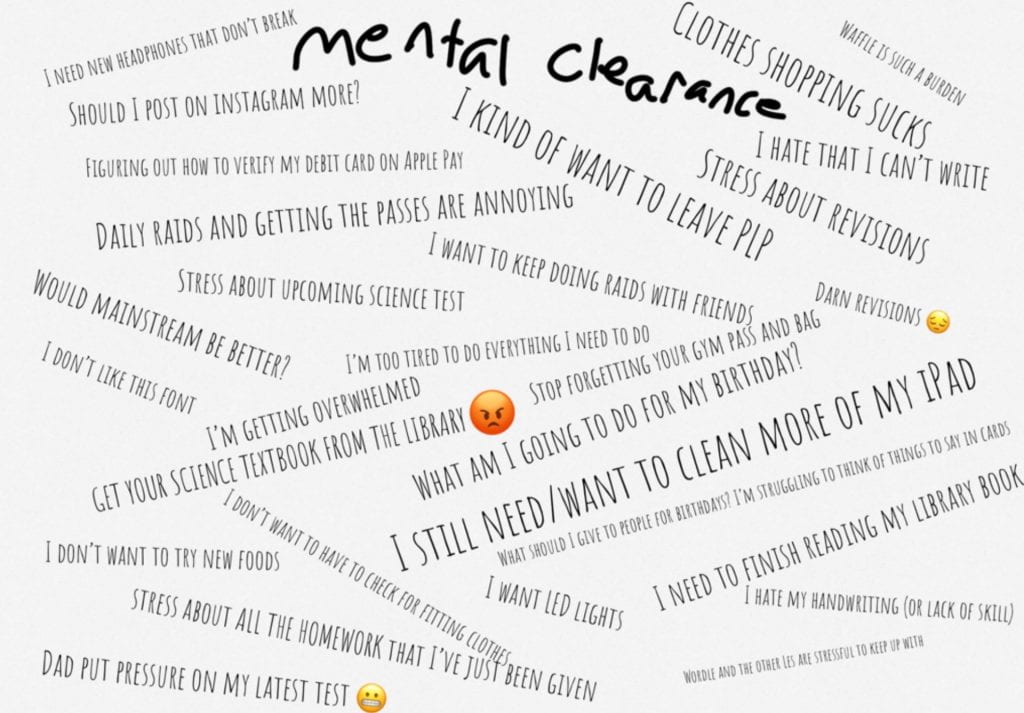
“Mental Capture: This was an exercise I needed. At first, it was slow, but it began to flow after a while. In the future, I’ll do this every two weeks (same day as room clean). The thoughts running through my head will be put onto paper, making my mind clearer. Who knows, maybe I’ll do some of the meditation we’re doing for keystone 2.”










Learning with ADHD and Autism, or even just focusing can be difficult for me. Often, I need to put different strategies in place just to help me out with day-to-day things like completing homework or even interacting with other people. This project offered me new things I hadn’t considered before.
Based on what I’ve experienced and tried, constant “Things” management, creative writing journal-wise (on my own schedule), backlog clearance of clutter on iPad and iPhone (when I have the time), marking important events on the calendar, and making guides for myself on different things (such as blogs). After trying out the strategies, these were the ones that best worked for me with who I am.
Overall, strategies that are centred around checklists and to-dos seem to work better for me as a learner. These help me keep a straight mind and organize my thoughts in a way that works for my ADHD and Autism.
Hello, and welcome back to another blog post. Today’s project is “Save Juno Beach! ?”, and it’s about WWII. Since this topic is so serious, I’m going to be taking away all of the humour I usually try to include in my blog posts to keep them flowing and light. During the course of this project, we made a mind map, presented on different WWII-related topics (formation of NATO & UN, Canadian industry coming out of WWII, Jews who survived the Holocaust, human rights in Canada, etc.), participated in WWII-themed Kahoots, listened to lectures about WWII, and researched among other things.
Now, I shouldn’t delay it any further, so let’s get right into it. Welcome to World War II.
This project had a lot of talking, learning, and researching. Whether it was memorizing important dates and events during the war, or watching WWII in colour, this was definitely one of the most important projects I’ve ever done research and knowledge-wise. It is extremely important that people learn about WWII, and the horrible events that happened, and experiences that people went through. During one of the activities, we were assigned random groups and told to choose one of the following to present on:
My group (led by my quick and hasty decision since we were first pick) chose industry. Throughout the course of our research, my team and I learned many things, such as the “Baby Boom”, the boost in jobs surrounding infrastructure and suburbs, and how Canadian industry was affected during and after WWII.
The main skill associated with this project was writing. Writing and evidence. I managed to further my essay writing skills, and we progressed and learned about the proper format of an essay. We critiqued and revised each other’s (classmates) essays, submitted a final draft. We also got tested with our memory skills, namely the challenging task of getting 100% on 6 different approximately 12 question Kahoots about WWII. We furthered presentation and group collaboration/communication skills with the earlier mentioned “Legacy of WWII” class presentations, and the historical significance Notability sheets.
“Why is it so important to learn about Canada’s involvement in World War Il? (2 sentences-ish)”
“Canada fought hard, and was a major contributor to ending the war. Honouring the people who fought, discovering how we helped, and finding out why we even celebrate things such as Remembrance Day or receive flowers from Holland each year are all key things.”
“Thesis: WW2 was historically significant because it affected and changed peoples lives semi-permanently, killed millions of people, scarred many more, and led to the creation of new things.”
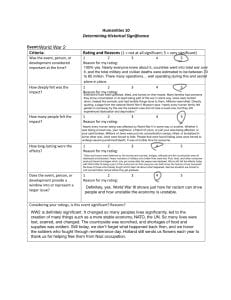
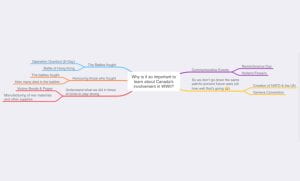

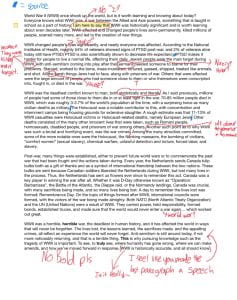
Canada fought hard in and was a major contributor to ending the war. Honouring the people who fought, discovering how we helped, and finding out why we even celebrate things such as Remembrance Day or receive flowers from Holland each year are all important factors to consider when trying to answer this question. Understanding what we did during those difficult times, and noticing similarities in the past world and today in Canada could be the key to preventing future conflict as well. Overall, Canada was a key player in the war, and we sacrificed a lot to have a comfortable society today.
Welcome to “This is Us ??”! The project that kicked off Humanities semester 1 and gave us a better understanding of Canadian identity. In this project, we had class discussions, talked (a lot), created and answered questions, reflected, learned about the charter of rights and freedoms, and made our own mini driving question.
I hope you enjoy reading about my learning!
This project was full of research, and that gave me the opportunity to learn quite a bit more about the world. For one, we asked questions (that fit guided criteria) we wanted to know about women in the past and how that comes into play in the present. We then researched the answers to those questions and came back to class the next day to discuss what we’d found. Later on, we each chose a topic that we thought was an important part of Canadian identity (e.g. Canadian actors, Tim hortons, the economy). I chose to explore the Canadian education system, since that is exactly what helps me learn. I found out quite a few interesting things like the most common jobs in Canada and where they are most in demand, or the pros and cons of the system.
During the human library, I heard stories from people and learned of their experiences. I listened to someone talk about how difficult it was growing up Latin-American and how they pushed through and became a successful lawyer. I also listened to my grandfather talk about his projects and creations that aid people with disabilities.
In the overall project, I learned a lot about Canadian identity and how it reflects us.
Most of the skills during the duration of this project were centred around conversations and asking questions, which I usually struggle with. I found it more difficult to open up and ask questions, as well as even coming up with them in the first place. I did however try to at times lead the group and get us going, though that was usually short-lived thanks to either lack of ideas or lack of effort and enthusiasm. In class discussions, I found it hard to chip in since either the things I’d thought of had already been said, or I just didn’t have anything to say.
The one thing I didn’t struggle with as much was independently creating a video to go along with one of my books (presenters) experiences. They sent me some photos and videos, and I made it into a video that would loop during the conversations people had with my grandfather. I think people found it helpful because it gave them more things to question and talk about, along with being a guide for their imagination when he’d explain something.
I also refined my researching and notetaking skills when I researched my education topic to share with a small group for class.
Canadian Education System Elevator Pitch
Answering the Education System NTK



Conversations are a great way to make connections and open up to people. It’s only with conversations that we can challenge corrupted perspectives, work towards and compromise on solutions that benefit everyone, and bridge gaps.
Firstly, conversation allows us to expose strong biases and prejudices (had to look for a second word) that throw justice and equity out the window. By having honest and thoughtful conversations, people can work through such things.
In addition, conversations create a place for empathy and understanding (as we saw with the human library). When people actively listen to each other and try to see new perspectives, we can make connections even through different experiences.
In conclusion, it is through conversation that we can create the change necessary to build a more equitable and just world for all.
“Thank you for coming to my presentation of learning. I am the expert on my own learning. I am also responsible and accountable for my own learning. You can expect me to give an honest evaluation of my progress. We will discuss my strengths and opportunities for growth. Thank you in advance for listening and for offering feedback that I can use to improve as a learner.”
This year is my second year in PLP and a lot has happened. As a learner, I’ve had lots of opportunities to grow, and I’m confident that I have improved myself using these opportunities. I’ve brainstormed, compromised on ideas and reached agreement in group projects, worked on my public speaking skills, communicated with my peers, developed my skills in technology, and overall used my creativity as a driving force for my projects.
I will now share with you how I’ve grown as a learner and why I’m ready for the transition to grade 10.



If I had to choose a PLP class to be my favourite, I would have to settle for Science. I felt that during the projects that we did in this class, I was really able to unleash my creativity and create final products that I was really proud of. I feel as though during the duration of Science, I was able to meet, if not go beyond, the goals I had set for myself.
For this assignment, I was really proud of my work on it. I utilized my practice in coding and graphic design to create a “somewhat” comprehensible food web of some of the more basic species. The only thing I’d change if I did this again is making the arrows more orderly and easy to understand. Other than that, this is definitely something I as a learner can be proud of.
I really liked the idea of this project because it relied on two abilities that I’m confident in; acting and video editing. I was able to put both of these to good work in this keystone, and I was thrilled with the results afterwards. The accents and impressions, amazing lines, and “smooth” video editing provided for an experience that I was pleased with.



This year in Maker, I was really able to explore my areas of interest more. We spent a lot of time working on photography and videography projects, which is a strength of mine, and I was able to apply these skills well.
This assignment definitely preyed on our patience. In this, I created a Stop Motion video that used both my practice in video editing and filming. I put a lot of time and effort into this project, even asking for an extension just so I could finish it at home because I was so keen on getting the final product just right and as close to the original video as possible (Rick Astley’s “Never Gonna Give You Up”). I wanted to make sure that I as a learner could say “I made that” with confidence.
This was a real video editing experience, and I enjoyed every minute of it. From conducting an interview, to filming B-roll of different AR and VR technologies, to spending hours in CapCut, looking over and making sure that my creation was going to be interesting and eye-catching. Creating and presenting this video at the winter 2022 exhibition was an experience I’ll never forget because I was so overjoyed with how the final product turned out and how much people enjoyed watching it.



We touched on a wide range of topics in humanities, and I found myself intrigued by each one. From sci-fi and Frankenstuffies, to the five themes of geography and slam poetry, it was an exciting and new project at every turn.
Here we have the project called “Rise of the Frankenstuffies”. I was given lots of creative freedom in this project, and I feel like I used it to its fullest potential. I enjoyed getting to make up my own story from scratch that followed my rules in a world of my imagination. Both the most challenging and rewarding part was the video filming and editing, where it was necessary for me to use a green screen on the backdrop while filming and move my stuffies at the same time. All of these working parts definitely made it harder, but I still managed to complete it with general ease and enjoyment. I enjoyed voicing the characters because I got to make up their personalities from scratch as well as I saw fit.
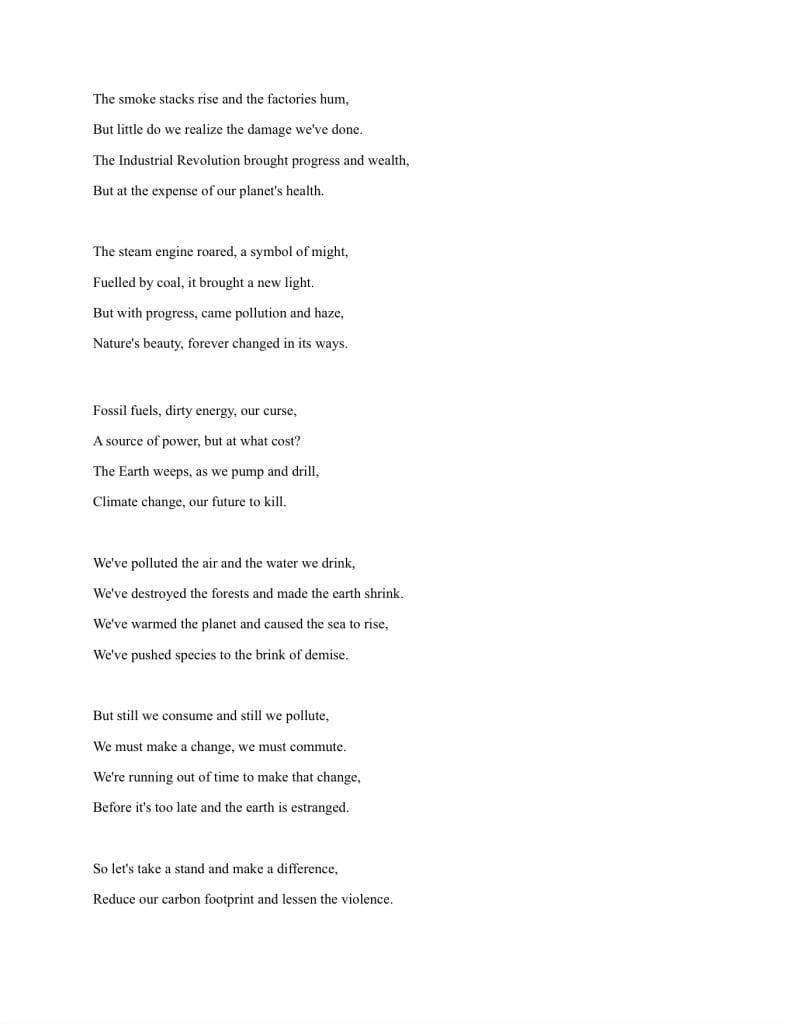
 This project was certainly an interesting one, and I found myself getting more wrapped up in it by the day. In the past I’ve had my fair share of poems, both in grade 8’s coffeehouse, and in my grade 7 and 6 classes, where we learned more about the vocabulary of poems and how to both make and identify one. The thing about this that specifically stood out to me was how, from the very first day, the poem was meant to be revised by your classmates. You weren’t supposed to get it right first try. You were supposed to look back, ask a peer, and see what you could improve on if anything. Even if you didn’t have anything that you thought you could change, the fresh perspective of someone else definitely aided in making a satisfying final product.
This project was certainly an interesting one, and I found myself getting more wrapped up in it by the day. In the past I’ve had my fair share of poems, both in grade 8’s coffeehouse, and in my grade 7 and 6 classes, where we learned more about the vocabulary of poems and how to both make and identify one. The thing about this that specifically stood out to me was how, from the very first day, the poem was meant to be revised by your classmates. You weren’t supposed to get it right first try. You were supposed to look back, ask a peer, and see what you could improve on if anything. Even if you didn’t have anything that you thought you could change, the fresh perspective of someone else definitely aided in making a satisfying final product.


This project relied on teamwork and cooperation between your group member(s). Both DIY skills and the creativity of coming up with a (semi) new idea for a board game were necessary in given out to us by the teachers. I had a fun time creating this because I got to design my own player pieces based on information I’d researched about each of the Canadian provinces (see second above photo). I also enjoyed seeing the looks of joy on the grade 8 faces when they got to try our game. I especially enjoyed when they turned to looks of horror when they found out how complicated the game was.
This was the most recent humanities project we had, and probably the one I enjoyed the most in the entire year. Now, that might be saying a lot, but I find it to be true in this project. I’ve gotten to use lots of skills, and even further some new ones for me. From acting and theatre performance practice, to sound design and video editing. Even DIY and script writing were included in this collection of talents! This project had it all, and better yet, it was being performed at the spring exhibition. The final product was a massive hit with everyone, and tons of compliments were showered upon my group and me. Collaborating in a group was definitely something that helped the experience because there’s nothing like bouncing ideas off of people you know to create an amazing piece of art. In this case, a performance.

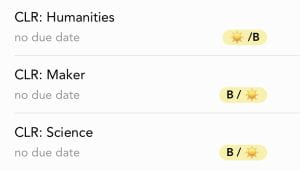
I think my work in grade 9 reflects that, as a learner, I have made quite a few final products that I can be proud of, and in the end, I have the skills and spirit to get things done, despite having difficulties arise.
Last year, I had difficulties focusing my attention in class and staying on task. I often distract both classmates and myself, and generally have a harder time completing work within the given class time. This year, though, I’ve had a very successful time focusing and using my time wisely and efficiently to create and accomplish.
I will take my skills, both new and old, my strengths and weaknesses, my strategies for learning, my love of both photography and music, and my newfound knowledge with me as I move into grade 10. (Double digits! Woot woot!)

This blog post will be a bit different from my usual ones. I mean that in the sense that this post is actually two things smushed into one! In this post, I’ll reflect on and talk about both the process of “Dulce et Decorum Est” and the skills I gained from it, and how the Spring Exhibition went or if I can add more on the topic of the Spring Exhibition.WW1 Paragraph Placeholder
Throughout the course of this project, we learned a lot of things. Some of those things included
Overall, I was able to further my knowledge on a lot of topics I originally had little to no clue about.
As for the skills I was able to pick up or further improve on, I’d say I utilized a lot of them. A few of them were as follows:
I feel like throughout not just this project, but the school year as well, I’ve gained and progressed on lots of new skills, and am therefore becoming a better learner than the year before. tPols here I come!
Dulce et Decorum Est:
”Museums tell stories in multiple ways, and in many forms. For example, there’s interactive displays, and even in those, there are multiple forms. There’s visual, auditory, tactile (touch), olfactory (smell), etc. There’s also dioramas, VR, and living exhibits, such as people pretending to be a notable character. There are also layouts that help to understand the story the museum is trying to show or make example of. Some of these are thematic galleries, time & date, location of events, and many others. All in all, museums can tell stories in a variety of ways to drive it forward in the way they choose.” -Keystone 1
”The competing narratives of war can be sectioned into 2 main views: “The reality of war”, and “the myth of war”. For example, the myth might be a healthy soldier in a crisp clean uniform and little to no injuries on a poster telling people to join, as opposed to the reality that in war, uniforms were dirty and may even have lice in them (see “Weapons of WW1” presentation, subclass “Bayonets”), and the soldiers would have grave wounds, with diseases passing throughout the trenches. The myth of war refers to the government using propaganda to protect the country, gain public support, counter enemy messages, and recruit soldiers. It fixes war in the glory of a “noble and necessary endeavour.” On the other hand, the reality of war is the more negative effects of such. For example, the negative side of propaganda was that it manipulates people, limits freedom of expression, and spreads false information. These different perspectives show that war is a complex topic, with some justifying propaganda’s use, while others loathe its impact on ethical values and society.”
-Keystone 2

Launchers, Torpedos, and Bayonets, oh my!
“Solar:
– Make sound louder = fixed by air playing it to TV
– make trench look more like trench = brown paper or cardboard
+ Acting was very good
+ Sound effects really added to the performance
Owen:
+ Emotion was very powerful
+ & – Good emotional ending, but try to act better (practice)
+ & – Card is nice, but make sure you have an exhibition layout soon
+ & – Trench is easily noticed, but add texture
– Make grenades” -Keystone 3 feedback
“Cam:
– writing the Script and rewriting it to work around problems and ideas
– provide stomp rocket (for mortar shell)
– filming and video editing (for flashback)
– acting (in theatre performance)
– sound design” -Keystone 3 what I provided in the group work

Spring Exhibition 2023:
Dulce et Decorum Est:
Throughout the project, we were given multiple opportunities to expand our learning. The museum visit to the Museum of North Vancouver (MONOVA) and the multiple classes for creation, planning, and work all helped us reach our final goal of making a true museum experience.
Spring Exhibition 2023:
Being able to showcase the work that me and my group had been working on for while was probably one of the most enjoyable parts of this project for me. Both during and after the Exhibition, my group and I got multiple compliments and rounds of applause, and I’m really proud of that. Each time we performed, we’d notice little things we weren’t happy with or wanted to experimentally change, and it slowly bettered our performance to what we could call satisfactory.
It’s possible to make the contrasting narratives of come alive for an audience in a multitude of ways, and a museum is one of the best ways. Museums give the audience a unique experience to walk through history themselves, getting to see the different perspectives, listen to key stories and events, and explore many other possibilities. Theatre (living exhibits), interactive displays, VR and AR, dioramas, and many other things can offer an interactive and interesting experience to keep the audience intrigued and interested. All these things and many more make it fun to learn about and explore the contrasting narratives of war, as we got to see through our final product. The theatre performances, the interactive cannon (along with other interactive exhibits), and realistic dioramas were all a big hit during the museum experience on Exhibition night. Making the contrasting narratives of war come alive for the visitors was certainly a journey, but a rewarding one.